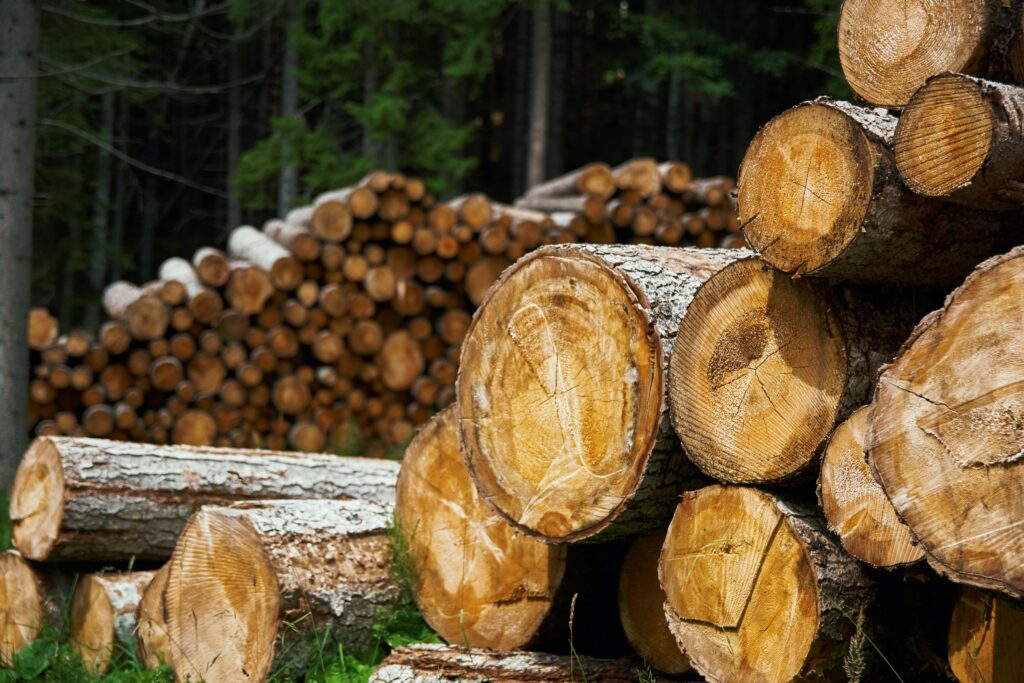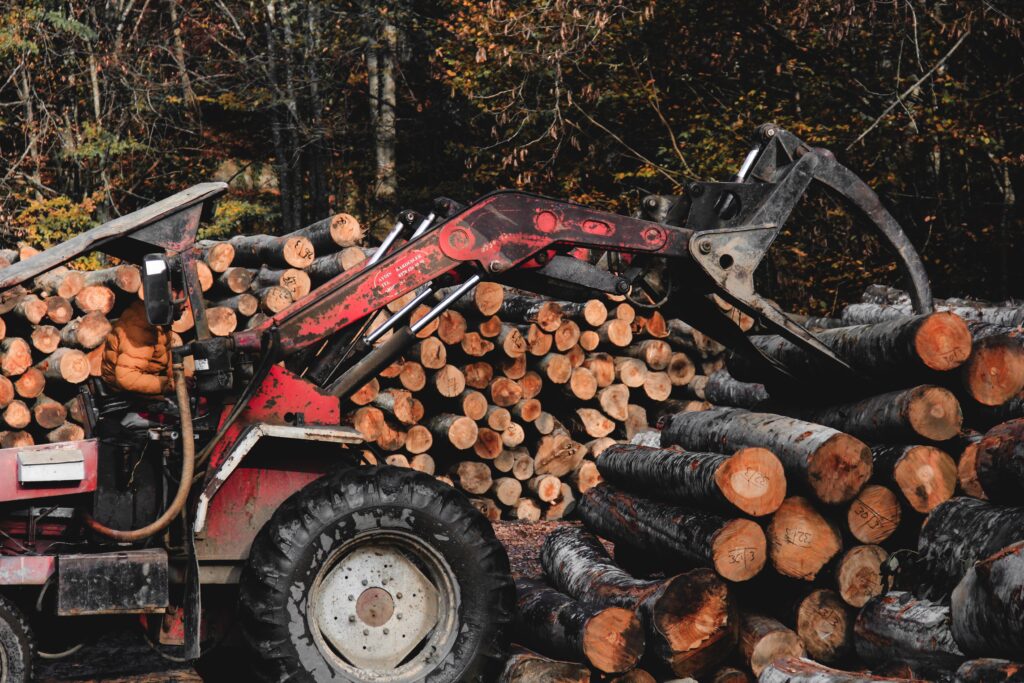
Wisconsin Forestry Products
Landowners, watching Covid-era lumber prices go through the roof, might assume that they would get more money for their standing trees, but there are many factors that go into what logger can afford to pay a land owner and still make his own living. While lumber prices are high, fuel prices and wages needed to attract timber workers are also up.
“High fuel prices have been tough on the logging community and saw mills too,” says Alex Anderson, WDNR Forest Products Specialist stationed in Rhinelander. “An 18-wheeler is getting five to eight miles per gallon, and diesel has been over $5 a gallon. The last two years it has been challenging to get replacement parts for equipment when it breaks, and down time costs loggers and mills a lot of money.”

Location, Location, Location
Many old rules for timber harvesting may not apply any more. What part of the state you live in can make a big difference in the interest you can attract from the lumber producers, but there are still ways to make a woodlot pay in the north and southwest parts of the state.
“North Central Wisconsin has a lot of pines. That is our state’s largest softwood wood basket – the greatest amount of merchantable pine is there,” says Anderson. “Southwestern Wisconsin is primarily an agriculture-driven economy so forestry is not as pervasive. Also, transportation is a big issue there — winding roads with lower speed limits. The longer it takes to get wood from logging site to a mill — the more challenging it is for the logger to make a profit.”
Brian Zweifel, WDNR Forester based in Dodgeville, agrees. “We encourage folks, if they have a small wood lot, that they consult with their neighbors to see if they are also interested in a forest improvement project. Having more volume in a single job is the way attract a logger. With larger projects to work on, it makes it more economically viable for the logger to take the job and give a decent rate for the stumpage that they are purchasing. The key to a good timber sale for a land owner is to get many loggers interested in it so you can get multiple bids and take the best bid.”
Soft Wood Types

Red Pine (mostly grown in the north) can be more easily treated for outdoor uses and is a slightly denser wood, making it preferred for structural applications like dimensional lumber. “Because it is grown in plantations and drops its lower branches as it grows, you get a more clean, knot-free lumber than with any other soft wood species in the state. The equipment used to harvest them in the north is called a processor. It has a chain saw at the bottom to cut the tree, which is then moved through a canister than knocks off the limbs before it is cut to length. “In Wisconsin, most timbers get cut at 100 inches,” says Anderson. “Most hardwoods are cut at 8’ 4”, but they may be 10 to 12 feet long.”
White Pine is used more as hard woods are with more apperance-grade applications in furniture and wall cladding.
In general, softwood fibers are long and strong and have traditionally been turned into paper. Wisconsin has been the lead paper-making state in the country for several decades. It was a blow to Wisconsin forest products when Verso Mills in Wisconsin Rapids closed several years ago. That mill opened in 1904, and could produce 540,000 tons of paper a year that was used in catalogs, books, and magazines.
The growth of e-commerce has helped support the pulp wood industry by increasing demand for shipping boxes and packing material. According to the Wisconsin Economic Development Department, “After a period of consolidation and mill closures driven by declining paper demand, industry leaders say they are optimistic about the future. Growing concerns about the use of plastic, from straws to single-use bags to food packaging, is creating new opportunities for paper-based goods.
“Northern Wisconsin is fortunate to have mills that still accept pulp wood,” says Anderson. “These mills allow for more sustainable forestry because they take the least valuable and lowest quality trees.”
Zweifel notes, “Depending on how big the trees are, there are a few places that still take softwoods in Southeastern Wisconsin, but it’s limited — especially if it is not above 10” in diameter. If these trees can be used as a saw log, you have much better luck selling them.”
For those in Southeastern Wisconsin who have a stand of spruce or pines, Zweifel recommends that they have a forester come and do a quick assessment of what’s there to see if it is a viable timber sale now or if it needs of a contractor to do a thinning project. It may cost a little money at this point, but down the road it will help the stand and produce some lumber.”
Hard Wood Trees

Hard wood harvests are more common in the southern part of the state. “Generally, hardwood mills are looking for 12-18” diameter measured at 4.5 feet above the ground,” says Anderson. “They are looking for a tree that doesn’t have a lot of taper between top and bottom.”
“In the Southwest, there are pretty good markets for hardwood saw logs,” adds Anderson, “anything big enough to be sawn into hardwood-grade lumber, such as oak, maple, birch, walnut, and cherry that get used for mill work, furniture and other appearance applications. Walnut, in particular, is very valuable, but there has to be some volume to get someone to come harvest it. Most of these hard wood lumber crews do logging with chain saws. They still skid the logs out, so there will be some heavy equipment.”
For timber that does not interest lumber companies, Anderson suggests land owners look for a local person who does custom sawing. “We also offer a Wisconsin local-use lumber grade certificate, so land owners can use wood they have sawn — trees that won’t get used otherwise.”
The Wisconsin Local Use Dimension Lumber Grading Class, gives you the framework to learn how to grade your own lumber that you have sawn on your own property to build one- and two-family dwellings without having to get the wood professionally grade stamped. At the end of the free, one-day class, you earn a certificate you can use to grade lumber for yourself or someone else who is going to build with it.

“Wisconsin does export a fair amount of lumber,” says Zweifel, “so with the ban on Russian timber, there some hope that the need for lumber in Europe and other places will be higher, and Wisconsin can help there, but that will take time to develop. There are a couple of pallet manufacturers in southern Wisconsin and northern Illinois who can use softer wood. It doesn’t matter how pretty it is. And also bedding producers for pine shavings for animal bedding. Most of the pine I’ve seen sold have gone to either pallet manufacturers or animal bedding.”
It’s challenging to predict what a land owner will get paid for their standing timber. How convenient are the trees to access? Does the logger have to build roads? Is the timber good quality? How many trees are there? Zweifel recommends getting a forester to help assess the tree stand and help find the best market.
